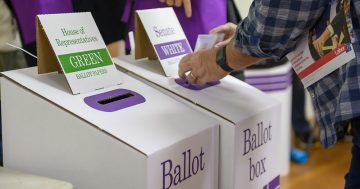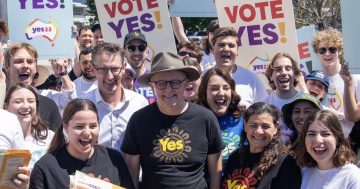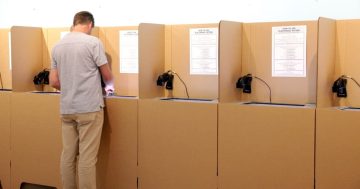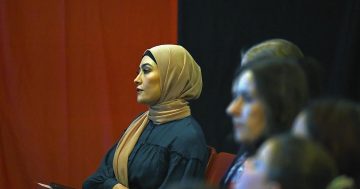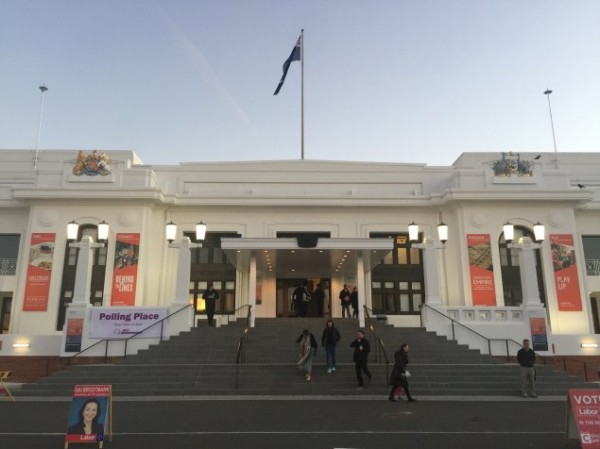
I’ve had a look at some numbers from the Australian Electoral Commission since 1996 and it is very revealing to see how our democratic process played out.
Here’s some of the numbers for your consideration.
John Howard won the 1996 election for the Liberal Party in his own right. The Libs got 75 seats and when he kept the Coalition, their combined total came to 94 seats with the ALP getting 49 and there were 5 independents.
The next time a government was formed by a party having an absolute majority in its own right was in 2007 when Kevin Rudd achieved 83 seats for the ALP against 65 seats for the Coalition and 2 independents.
At no other time in that decade (including this election) was government formed by the party having the most number of seats.
How interesting then that Malcolm Turnbull counselled against the chaos of an ALP/Greens/Xenophon combination when he indeed leads a Liberals/Nationals/Liberal National Party Coalition (indeed it included the Country Liberal Party in the NT until this election).
It is often missed that the Liberals are only the senior party in a coalition. Interestingly, the second biggest party in this partnership is the LNP from Qld. In the 2013 to 2016 period, the Libs had 58 seats (to the ALP’s 55), the LNP had 22, the Nats had 9 and the CLP had 1. Between them they racked up 90 seats to defeat Labor. But it still took the partnership to get over the magic number of 75 seats to take government. It is often missed that this partnership has been the way the Libs have ruled since Ming’s days.
And the way it looks this time round, the Libs & Co may get to 76 seats but it may be only 74 seats in which case they would need an agreement with at least two independents to guarantee supply and confidence. It would be a mirror of the deal done by Julia Gillard for the 2010-2013 period. So the righteousness of Mr Turnbull’s scare campaign about deals doesn’t ring true.
For the sake of history, these are the figures for each election since 1996.
1996 Libs 75, Nats 18 and CLP 1. ALP 49.
1998 Libs 64, Nats 16, CLP 0 ALP 67.
2001 Libs 68, Nats 13, CLP 1. ALP 65
2004 Libs 74, Nats 12, CLP 1 ALP 60
2007 Libs 55, Nats 10, CLP 0 ALP 83
2010 Libs 44, Nats 7, CLP 1, LNP (Qld) 21 ALP 72
2013 Libs 58, Nats 9, CLP 1, LNP 22 ALP 55
2016 (Likely) Libs 44, Nats 10, CLP 0, LNP 20 ALP 71
I heard that Xenophon was saying that the party who got the highest number of seats (or votes, it matters not which) would get his support. What disingenuity! The Coalition is not a party but a formal partnership between parties. He was just saying he would go with the largest voting bloc.
Some other interesting numbers are the numbers around the exercise of the balance of power. It is interesting that in many cases, a low percentage of primary votes delivered seats in the Two Party Preferred system and indeed in the 2013-2016 period the primary votes achieved by the crossbench were minute but still delivered seats.
For example, Katter got 0.7% of the primary votes, Bandt 0.7%, Palmer 0.7% and the other two independents 1.3%. This gives the 5 independents 3.4% of the total primary votes cast but their shadows in the halls of power spread large. The same is likely to occur this time. Indeed, in 2010 the combination of the 4 independents and the one Green was 3.4% and yet they held the Gillard government to ransom.
In fact, when you look at the disproportionate power wielded by the Nationals with their low number of seats in each election since 1996, the picture of disproportion is much clearer.
They were part of a government in 5 of the 7 periods (excluding the 2016 election) and they achieved only 18, 16, 13, 12 and 9 seats for those periods. How the tail wags the dog? Indeed, with the emergence of the LNP in Qld, this group has achieved 21 and 22 seats in each of the past two elections, eclipsing the Nationals.
At least the Libs and Nats formally joined as one party – the LNP – in Qld. It is one party. Shame that the Nats and Libs nationally don’t do the same and drop the pretence of maintaining their sovereignty and independence but diving under the doona for the spoils of office.
A trawling through the election results of past elections does help in gazing at the tea leaves. Once again, I see that the ALP will get the greatest number of primary votes (the preference of the majority of people), will get the largest number of seats of any individual party but will be denied the opportunity to govern.
But hey, that’s democracy.












